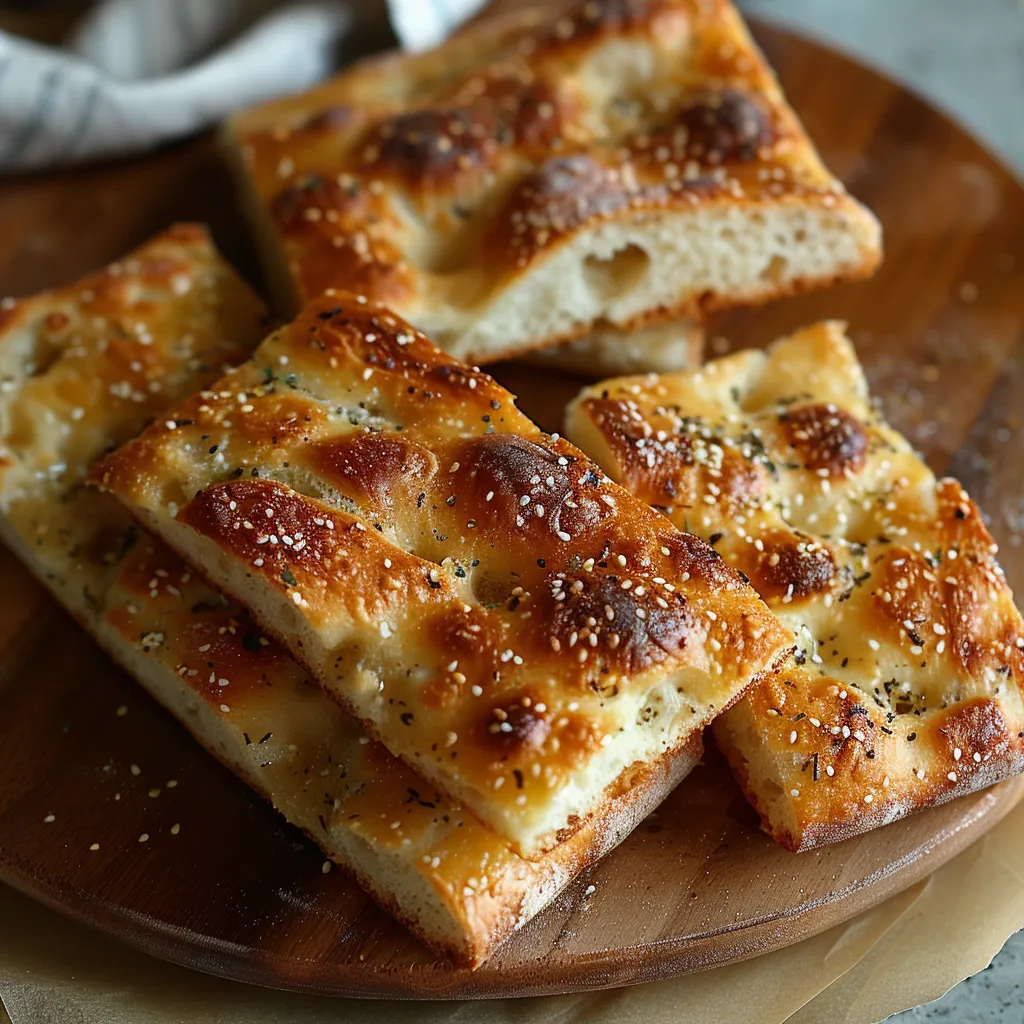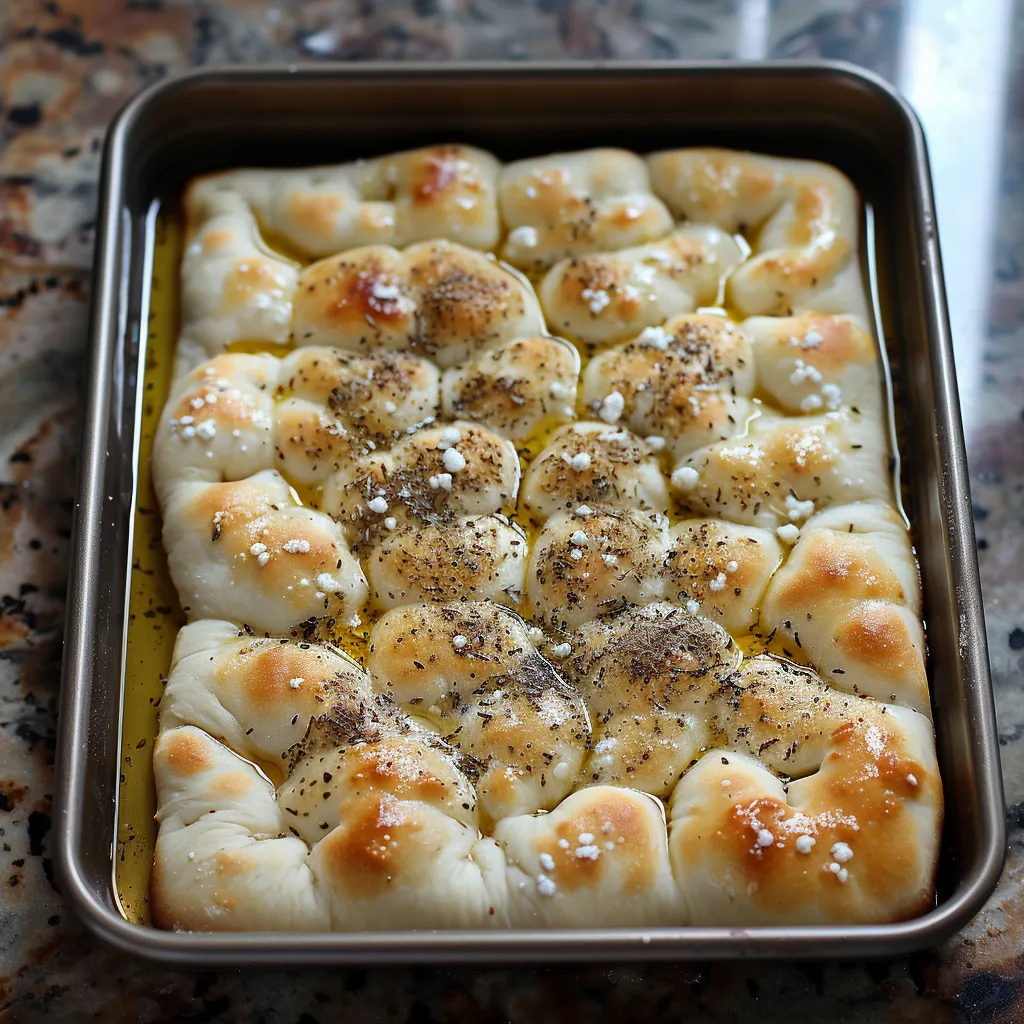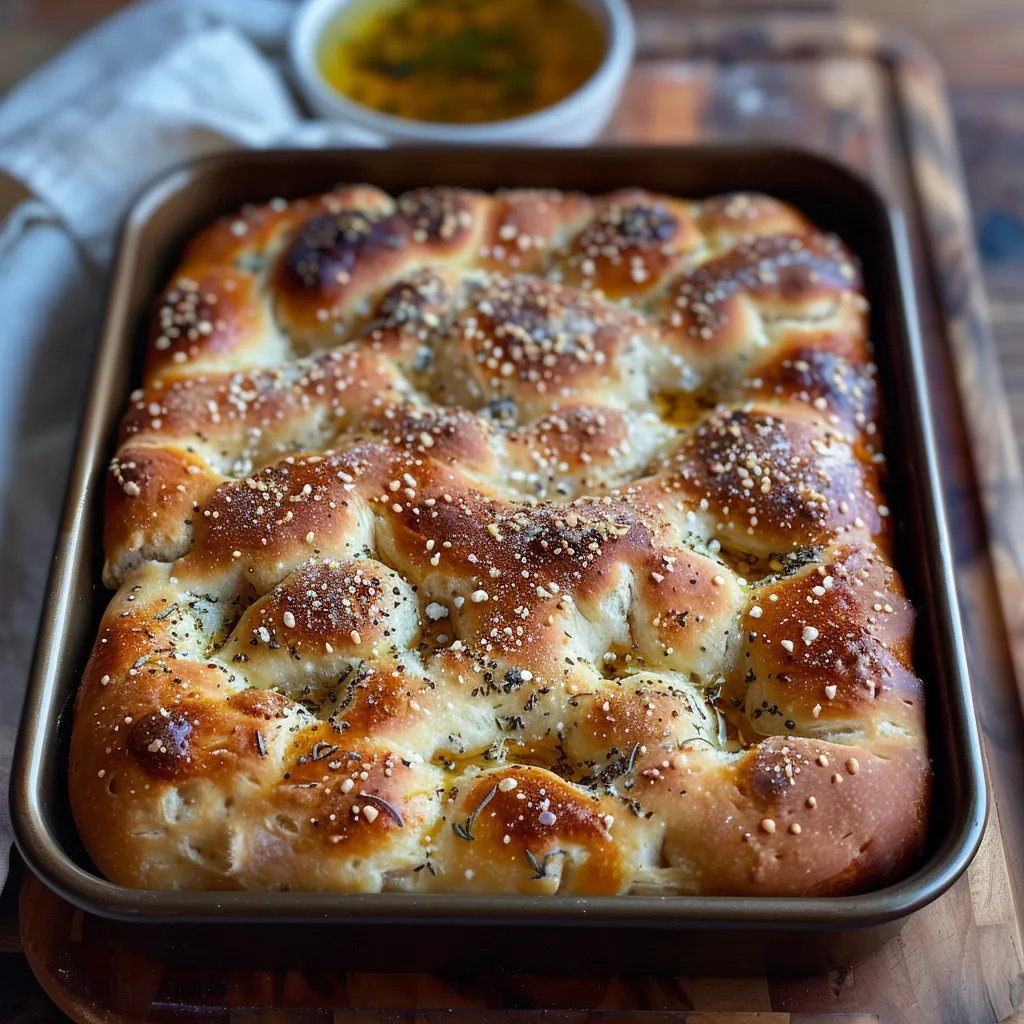 Pin it
Pin it
Homemade focaccia's charm comes from its wonderful contrasts—that crispy, golden outside giving way to a soft, bubbly inside. This version uses your leftover sourdough starter in the best possible way, creating amazing taste without much work. You can bake it right away or let it sit overnight for extra tang. Either way, you'll want to make this simple, rustic bread again and again.
I brought this focaccia to our family get-together last week using the overnight approach. The long rising time made such rich flavors that my brother-in-law, who typically skips bread altogether, wanted to know how I made it. The secret? Plenty of olive oil and soft touches when folding the dough.
Key Components
- Sourdough Discard/Starter: Pick discard under a week old for optimal outcomes. Newer discard still contains enough life for proper rising.
- Bread Flour: Gives that wonderful chew and helps create those air pockets everyone loves. All-purpose works too, but bread flour makes it taste bakery-quality.
- Top-Notch Olive Oil: Crucial for both taste and texture. Go for extra virgin with some bite to it for best results.
- Kosher Salt: Brings out natural bread flavors and adds nice crunch when sprinkled over the top.
 Pin it
Pin it
Step-by-Step Guide
- First Mix and Wait:
- Put flour, water, starter, and salt in a big bowl. Stir until you can't see dry flour anymore. Cover and wait 15 minutes. This gives the gluten a chance to start forming on its own.
- Folding Technique:
- Get your hands wet so dough won't stick. Take one side of the dough, pull it up and fold toward the middle. Turn the bowl and do this three more times. Repeat this whole process five more times, waiting 15 minutes between each set. You'll notice the dough getting smoother each time.
- Initial Rise:
- Move dough to an oiled bowl and brush the top with olive oil to keep it from drying out. Let it double in size at room temperature, about 4 hours. It should look puffy with lots of air inside.
When I was little, my grandma always told me to feel the dough to know when it was just right and to never hold back on the olive oil. I still follow her advice whenever I bake.
Ways To Enjoy
This bread goes great with everything from hot soups to meat and cheese plates. It makes really good sandwiches the day after—if you don't finish it all first. Try adding fresh herbs, small tomatoes, or sweet cooked onions on top for different seasonal flavors.
Keeping It Fresh
Keep your focaccia wrapped in parchment at room temperature for up to two days. To make it crispy again, warm it in a 350°F oven for about 5 minutes. For longer keeping, put portions in the freezer and heat them straight from frozen when you want that just-baked taste.
Making this bread has shown me that good baking needs patience and watching more than fancy methods. Every time I make it, I think about Sunday mornings in my grandma's kitchen, feeling the dough and just going with it. Whether you pick the quick same-day way or let it sit overnight, this focaccia brings old Italian bread-making right to your kitchen.
 Pin it
Pin it
Frequently Asked Questions
- → Can I swap discard for active starter?
- Absolutely! Use active starter or discard that's less than a week old for this dough.
- → What pan size works best?
- A 9x13-inch aluminum pan is ideal. For thinner focaccia, go with a half sheet, or use two 8x8-inch pans for smaller loaves.
- → How long will it stay fresh?
- Keep it in a sealed container at room temp for two days or freeze up to three months.
- → Can I prep it overnight?
- Definitely. Chill the dough in the pan overnight, and you'll get a tangier flavor result.
- → What's the purpose of dimpling?
- It spreads out air pockets in the dough and gives focaccia its distinct texture and look.
